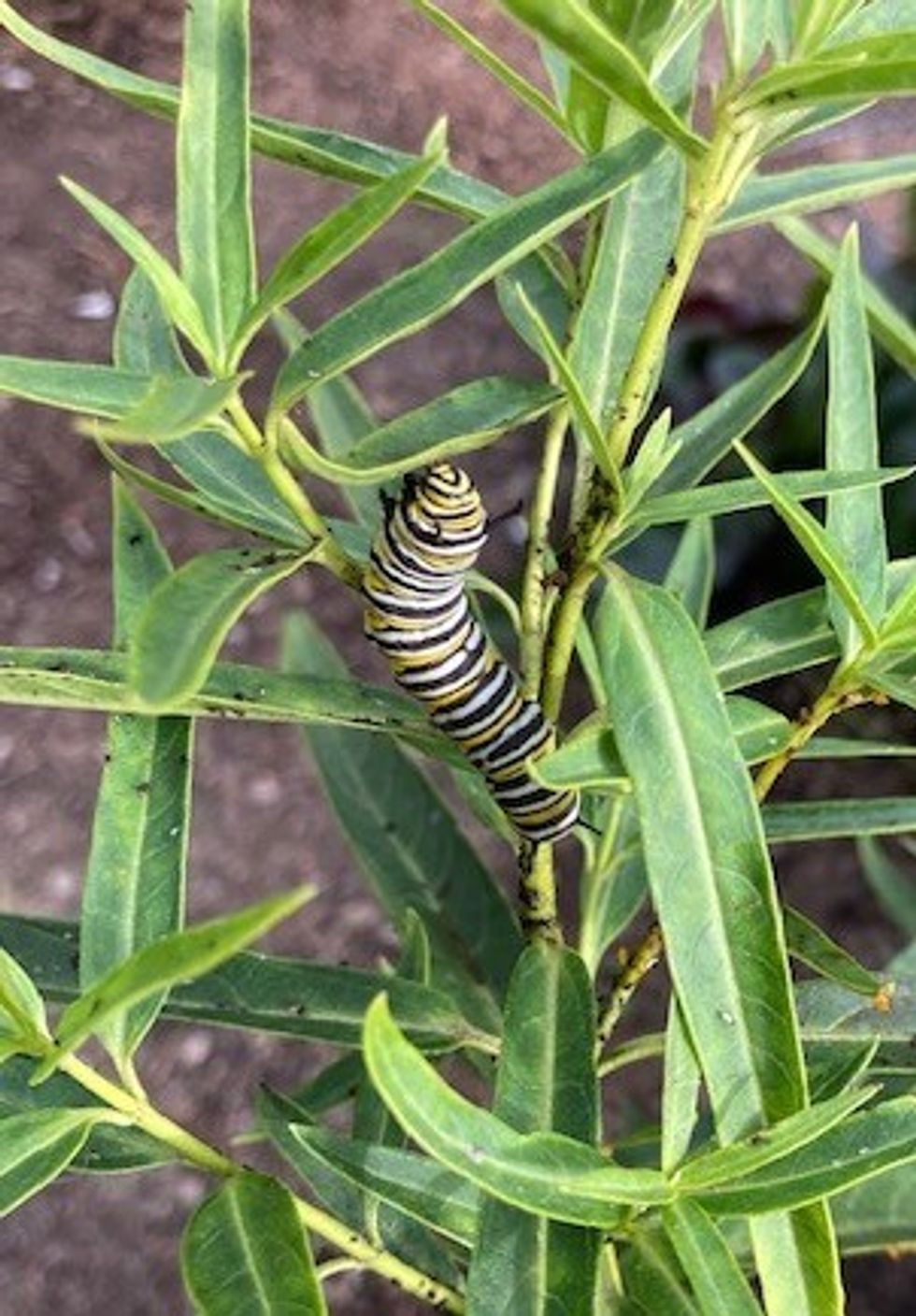MILLERTON — “Not one, but two monarch butterfly caterpillars have been sighted at the Community Pollinator Garden,” exclaimed an excited Mary Lynn Kalogeras last week. “One was munching on a milkweed incarnata leaf; the other, crawling on a serviceberry leaf, most likely, had lost its way. She/he was transported to a milkweed plant to eat its way to chrysalis-dom. Stay tuned for updates.”
Kalogeras is the volunteer who planned, designed and executed the pollinator garden, with the help of many other volunteers, on Century Boulevard in the village of Millerton. The garden is on a plot Dr. Kristie Schmidt donated this summer in front of her medical office, next to the post office.
“For me the garden has been mostly fun. Watering by hand was tedious because of the dry summer and the need to water frequently. But once one of our very generous volunteers donated and installed a drip irrigation system, that problem, I hope, was solved,” said Kalogeras. “And seeing those two butterflies in the garden’s first year was well worth all the work and worry. Most recently, I also saw a sparrow munching on seeds from a little blue stem grass. She/he was not more than 2 feet from me. The garden will not be taken down as the seeds from the plants will provide food for the birds during the winter.”
A member of the town of North East’s Conservation Advisory Council (CAC), Kalogeras said when she researched the North American Monarch, she learned that it’s considered “an iconic pollinator species” that’s “in serious trouble” because its population has decreased by about 80% in the last 40 years.
There are multiple reasons for why that is so, including climate change, habitat loss and high carbon dioxide levels making their only food source, milkweed, too toxic to ingest.
Kalogeras said “the Pollinator Garden currently has two kinds of milkweed — butterfly weed, which has orange flowers, and incarnata, which has white flowers — and it will soon have a third, swamp milkweed [with pink flowers].”
Donations of mulch are needed right now. Email marylynnk@gmail.com for details. Please write “pollinator garden” in the subject line.









 Submitted
Submitted






